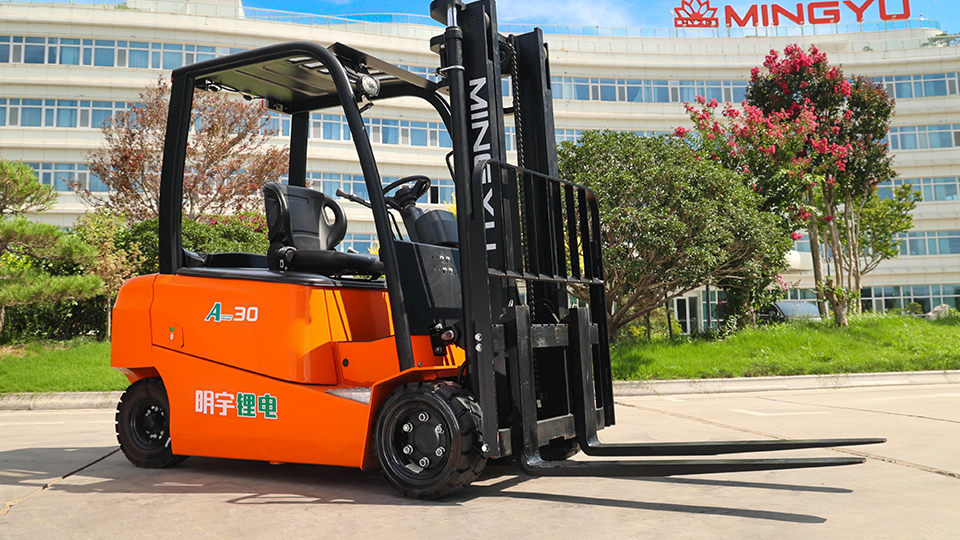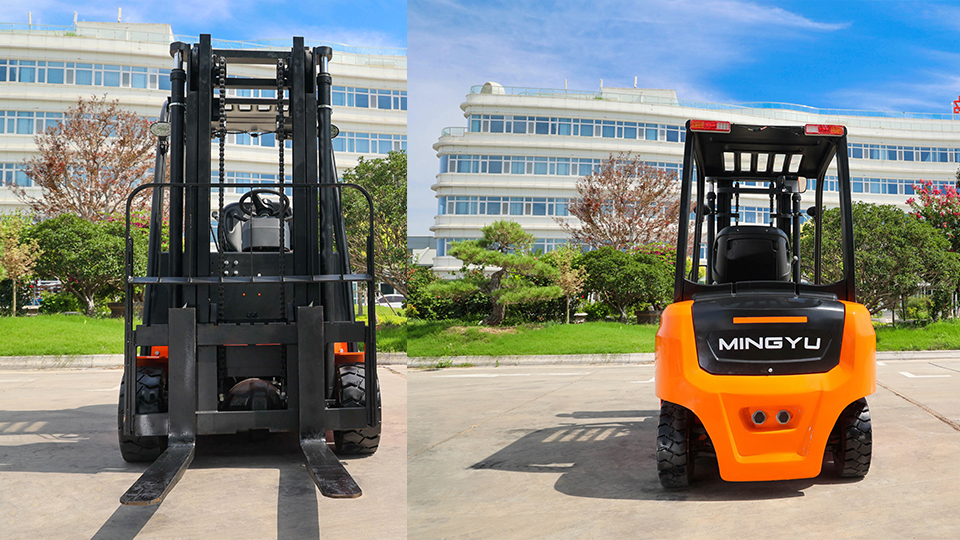
I. Introduction
Forklifts are indispensable tools in various industries, from warehousing and logistics to construction and manufacturing. Their ability to move heavy loads efficiently is crucial for productivity. One question that frequently arises is, "How fast can a forklift go?" While speed is a factor, it's essential to understand that it's just one aspect of forklift operation. This article aims to provide a comprehensive look at forklift speeds, the factors that influence them, and the critical importance of safety in their operation.
II. Understanding Forklift Types and Their Speed Capabilities
Counterbalance Forklifts:
Electric counterbalance forklifts typically have top speeds ranging from 8 to 10 mph (13 to 16 km/h).
Internal combustion models may reach slightly higher speeds, around 10 to 12 mph (16 to 19 km/h).
Factors like load weight, terrain, and maintenance affect these speeds.
Reach Trucks:
Reach trucks, designed for narrow aisle applications, have lower travel speeds, often around 6 to 8 mph (10 to 13 km/h).
Their lift speeds are more critical for efficient racking operations.
Pallet Jacks (Electric and Manual):
Electric pallet jacks usually have speeds between 3 to 5 mph (5 to 8 km/h).
Manual pallet jacks rely on pedestrian speed, which is significantly slower.
Their use is usually for short distances.
Rough Terrain Forklifts:
Rough terrain forklifts, designed for outdoor and uneven surfaces, have speeds around 15 to 20 mph (24 to 32 km/h) on smooth surfaces, but significantly lower on rough terrain.
Their design is focused on power and stability.
Specialized Forklifts:
Specialized forklifts like side loaders or articulated forklifts have speeds tailored to their specific applications, varying widely.
III. Factors Affecting Forklift Speed
Power Source (Electric vs. Internal Combustion):
Internal combustion forklifts generally offer faster acceleration and higher top speeds.
Electric forklifts provide smoother acceleration and are quieter but may have limitations in top speed and battery life.
Load Weight and Distribution:
Heavier loads significantly reduce acceleration and top speed.
Proper load distribution is crucial for stability and safe operation.
Terrain and Surface Conditions:
Smooth surfaces allow for higher speeds, while uneven surfaces and inclines reduce speed and increase risk.

Wet or slippery surfaces reduce traction.
Tire Type and Condition:
Pneumatic tires provide better traction on uneven surfaces.
Solid or polyurethane tires are suitable for smooth indoor surfaces.
Proper tire inflation and condition are essential for optimal performance.
Maintenance and Condition of the Forklift:
Regular maintenance ensures optimal performance and prevents speed reductions due to worn components.
Poor maintenance can lead to mechanical issues that greatly reduce speed.
IV. Safety Regulations and Speed Limits
OSHA Regulations:
OSHA emphasizes safe operating speeds and requires operators to adapt to workplace conditions.
There are not strict miles per hour regulations, but rather regulations that focus on safe operation.
Industry Standards and Best Practices:
Industry standards recommend site-specific speed limits based on traffic, visibility, and surface conditions.
Following best practices reduces the risk of accidents.
Internal Company Policies:
Many companies establish internal speed limits to enforce safety.
Violating these policies can result in disciplinary action.
V. Technological Advancements and Speed Control
Speed Governors and Limiters:
Speed governors regulate engine speed to maintain safe operating speeds.
Speed limiters restrict the maximum speed to prevent excessive speed.
Regenerative Braking and Acceleration Control:
Regenerative braking recovers energy during deceleration, improving efficiency.
Advanced acceleration control systems provide smoother and safer operation.
Telematics and Fleet Management Systems:
Telematics systems monitor forklift speed, location, and usage.
Fleet management systems provide data for optimizing operations and enforcing safety.
VI. Practical Considerations for Operating Speed
Warehouse and Indoor Environments:
Safe operating speeds in confined spaces are crucial for pedestrian safety.
Maintaining awareness of surroundings is essential.
Outdoor and Construction Sites:
Adjusting speed for uneven terrain and weather conditions prevents accidents.
Maintaining stability on rough surfaces is paramount.
Dock and Loading Areas:
Safe operating speeds in high-traffic areas are essential for preventing collisions.
Maintaining awareness of surroundings is critical.
VII. Training and Operator Qualifications
Importance of Proper Operator Training:
Training ensures operators understand forklift capabilities and limitations.
Proper training reduces the risk of accidents caused by excessive speed.
Certification Requirements:
OSHA requires forklift operators to be certified.
Certification demonstrates competence and knowledge of safe operating procedures.
Continuous Education and Refresher Courses:
Continuous education keeps operators up-to-date with safety regulations and best practices.

Refresher courses reinforce safe operating procedures.
VIII. Impact of Speed on Productivity and Efficiency
Balancing Speed and Safety:
Optimizing speed while maintaining a safe work environment is essential.
Excessive speed can lead to accidents and reduce productivity.
Effects of Speed on Battery Life and Fuel Consumption:
Higher speeds consume more energy in electric forklifts, reducing battery life.
Higher speeds increase fuel consumption in internal combustion forklifts.
Wear and Tear on Forklift Components:
Excessive speed increases wear and tear on forklift components, leading to premature failures.
Regular maintenance mitigates wear and tear.
IX. Case Studies and Real-World Examples
Examples of accidents caused by excessive speed demonstrate the importance of speed control.
Examples of how proper speed control improves safety and efficiency highlight the benefits of safe operation.
Data on speed related accidents shows the importance of adhering to safety regulations.
X. Conclusion
While forklift speed is a factor in productivity, safety must always be the priority. Understanding the various factors that affect forklift speed, adhering to safety regulations, and providing proper operator training are essential for ensuring a safe and efficient work environment. Balancing speed and safety is critical for optimizing forklift operations.
Name: selena
Mobile:+86-13176910558
Tel:+86-0535-2090977
Whatsapp:8613181602336
Email:vip@mingyuforklift.com
Add:Xiaqiu Town, Laizhou, Yantai City, Shandong Province, China